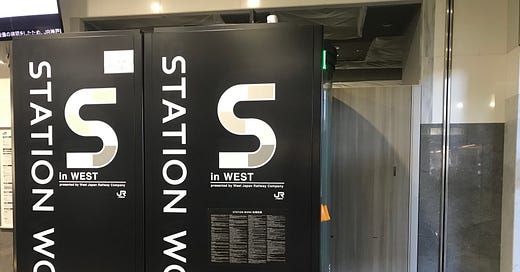Where to work?
Status quo
The covid-19 pandemic has changed the way we work and where we work. A recently published report by McKinsey Global Institute notes office attendance in the top nine “superstar” cities globally remains down by 30% on pre-pandemic levels. Rates of office attendance vary by industry and location factors but have been stable for around 12 months with the average survey respondent working 3.5 days on site. Lower demand for office real estate is shaping urban and suburban landscapes in terms of residential and retail space, and there is a shift towards versatile development.
Organisations are reviewing their office real estate needs. Often plans are evolving to fewer assigned desks in favour of hot-desking and more space for collaboration with colleagues. Demand for office space overall is declining - reflected in increased vacancy rates and reduced transaction volume, real terms sales price and rent.
Organisational decision making on office space specification will cycle back and affect on site attendance as well as productivity. While more collaboration space may be useful for some workstreams, others who have a call-heavy schedule will find it difficult to find a quiet and confidential place to work. Some workplaces pepper open plan offices with soundproof private booths that employees can book, but this can mean uncomfortable seating in a small enclosed space which may limit productivity for longer time periods. Some workers with a call-heavy schedule that have a good set up for home working opt to work remotely more often. Workers that require specific facilities may find their productivity affected struggling to find a suitable workstation when they attend on site as offices move to more efficient space usage. Research suggests employee pushback on hot-desking, for reasons including time taken to find an appropriate workstation, working beside unfamiliar co-workers and sub optimal desk set-ups (e.g. being expected to work from a laptop with no monitor/ keyboard/ mouse).
An increasingly popular option are on-demand co-working spaces that provide bookable facilities from desks and meeting rooms to podcast recording studios. Subscription and on demand services exist for enterprise customers as well as for individuals, meaning that organisations can provide remote workstations for individual employees outside their home environment, as well as book collaboration spaces for their teams. Remote-only companies such as GitLab or companies that hire globally but do not have offices in every city offer co-working spaces as an alternative to home working to their employees, to ensure the whole workforce have somewhere suitable to be productive.
For certain sectors, some level of on site presence is key to operations, healthcare being an example. In UK General Practice, on site space has not been increasing at a pace adequate to meet demand. The Royal College of General Practitioners May 2023 infrastructure report notes 40% of those surveyed consider their on site premises not to be fit for purpose, due to insufficient consulting rooms in almost 90% of cases. Respondents reported staff work out of cupboards, corridors and loft space with implications for patient and staff safety. Where some on site presence is essential, inadequate solutions on where to work can limit service delivery and growth.
The future
Workplaces are evolving, and real-estate efficiency must be balanced alongside workforce productivity. The most forward thinking organisations will build flexible spaces alongside implementing digital logistics to optimise space according to workforce preferences, and automate this administrative burden. Ongoing data collection on work patterns and open dialogue with staff about their needs, organisational needs and where flexibility works will help organisations optimise real estate without undermining productivity.
In a number of companies, a new leadership position pioneered by GitLab but now mirrored in many others including LinkedIn, Twitter, Nationwide and Deloitte, is being implemented around leading, auditing, curating and transforming organisational remote and hybrid culture. In these companies, Head of Remote is a full time job. In an organisation of any stage or size, leading the evolution and optimisation of where to work is a dedicated and senior workstream that must be addressed on an ongoing basis to ensure the workforce have the workplace they need to reach their potential.



